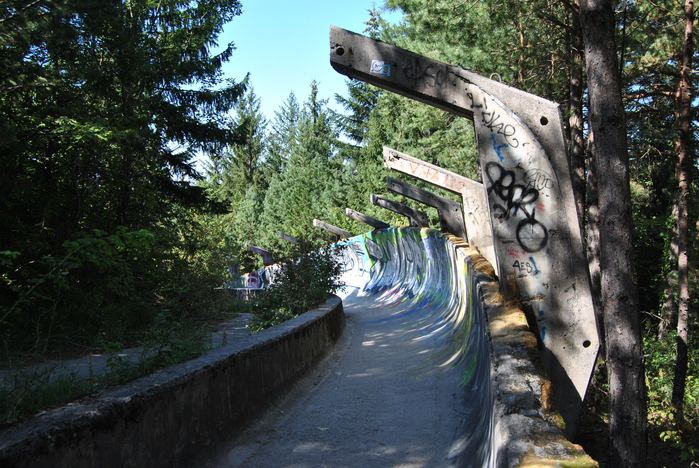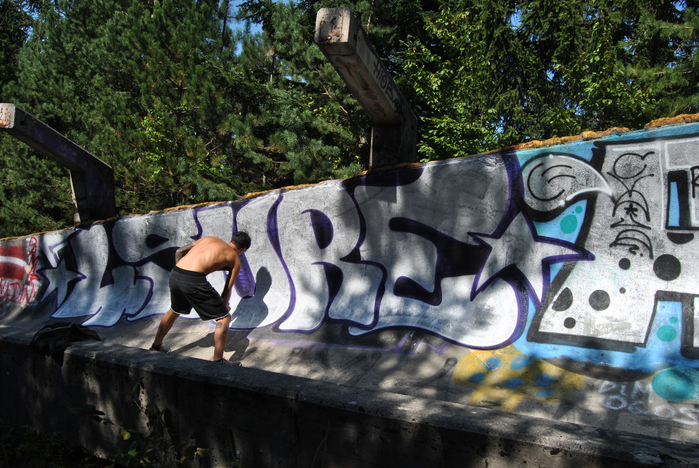3.2. Sites of Memories: Mount Trebević
Mount Trebević housed one of the main venues for the 1984 Sarajevo Winter Olympics. Known for the bobsled run on its slopes, this 1627-meter-high mountain was popular as a resort during the Yugoslav period. For residents of the city in the valley below, it was a refuge from the smog in winter and the heat in summer. Although it was accessible by car, in the pre-war period many residents used the cable car that connected the old, Ottoman part of the city to the mountain in a few minutes. The cable car was damaged during the war and rebuilt in 2018, when I had the opportunity to ride it and record my return trip from the mountain from inside the cable car.
The relationship between the mountain and the city is complex, and to understand why some residents still refuse to visit the mountain, it is necessary to look into the past. During the war, Mount Trebević cast a dark shadow that threatened to swallow the city beneath it, plunging its inhabitants into an inferno of fire and smoke. Armies were positioned on the slopes of the mountain, targeting civilian residents day and night. Areas of the city that came under direct fire were called “sniper alleys.”
For years after the war, the mountain was haunted by this past. The invisible border dividing Bosnia and Herzegovina into the Federation and Republika Srpska runs along the slopes of the mountain. Some areas that had contained strong military posts were cleared of landmines only in 2020.
In 2014, I went to the mountain with a war veteran who had not been there since 1990. The silence in the car was broken by his occasional comments about the poor condition of the road or how the place used to look much nicer. Before long we reached the remains of the concrete foundation of a platform where he shared a story about the café that used to be there, and the viewing platforms of a former cable car station, which was demolished during the conflict. As we walked along the mountain paths, he noticed a few bullet casings here and there while listening to the sound of the wind. He stated firmly that he “won’t be coming back for a long time” (personal communication 2014).
In the proximity of viewing platforms of the cable car, now, the derelict bobsled is covered in graffiti. Some sections of the site are used as a trail for mountain bike races. In one of the sections, I captured the hiss of spray cans being used by a graffiti artist from Italy. While listening to him and his girlfriend, I noticed other visitors roaming around.
I found myself in the midst of tourists, capturing a graffiti artist spray painting a destroyed Olympic monument. In a strange turn of events, the favorite picnic site of Sarajevans and the place that had attracted crowds of tourists in 1984 for the Winter Olympics became the location from which the citizens were most threatened during the war. The mountain was the dark shadow from which livid streaks of fire rained down on the city.
Now, tourists return to photograph and take in this powerful place where different histories converge. The audio recording l made, listened to out of context, could come from anywhere, although the voice of a middle-aged woman walking by locates us somewhere in central Bosnia and Herzegovina. The woman, contrary to stereotype encourages the graffiti artist by saying “bravo, bravo” and “they are filming, filming and drawing.”


